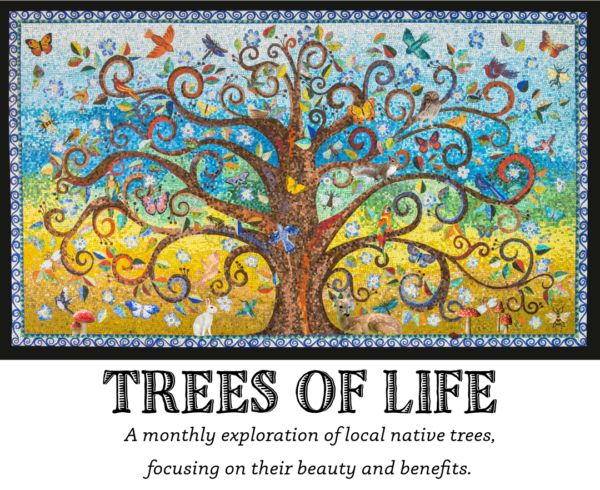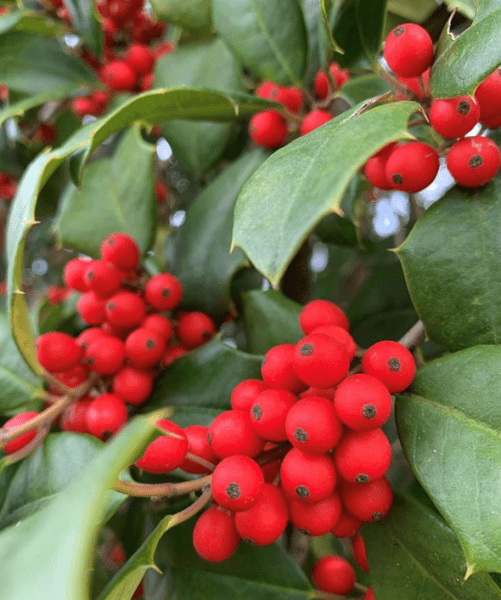
American Holly – Ilex opaca (EE-leks oh-PAY-kah)
Common Name(s): American Holly, Holly, Winterberry

In the 4 years I’ve lived in Bedford County I haven’t seen any Cedar Waxwings which causes me sadness although this is probably for the best since my home came to me with quite a few Nandina bushes included. My plan is to change both of these things by removing all the Nandinas and planting male and female American Hollies. These hardy, easy to grow trees provide winter color with their dark green leaves and brilliant red berries, traditionally used for wreaths and garlands. They are so beneficial to our native wildlife while being virtually deer proof! Care should be taken though as they aren’t good for pets or people to consume and are considered flammable so shouldn’t be planted in your defensible space.
Wildlife Value:
The Holly provides nectar for pollinators. It is a larval host plant for Henry’s Elfin (Callophrys henrici) larvae which appear from February to May and have one flight. Adult Henry’s Elfin butterflies feed on flower nectar. Its fruits are eaten by songbirds (especially Cedar Waxwings and Goldfinches), wild turkeys, quail, white-tailed deer, squirrels and other small mammals. Honey bees are attracted to its tiny white flowers. This tree also provides cover during the winter.
Facts:
Fun Stuff:
- Family: Aquifoliaceae
- Zone: 5 to 9
- Height: 15 to 30 feet
- Spread: 10 to 20 feet
- Bloom Time: May
- Bloom Description: Creamy white
- Sun: Full sun to part shade
- Leaf: Evergreen
- Attracts: Birds
- Fruit: Showy
- Other: Winter Interest, Thorns
- Tolerate: Deer, Clay Soil, Air Pollution
- Plant phenotypic plasticity!
- If leaves are eaten, the new leaves will form thorns
REFERENCES: https://www.missouribotanicalgarden.org/; https://academic.oup.com; https://americanholly.org/; https://plants.ces.ncsu.edu/; https://images.mobot.org/PlantRecords1/prod/large960/00095000/95537.jpg
SUBMITTED BY: Rosemary F., Bedford Extension Master Gardener volunteer.